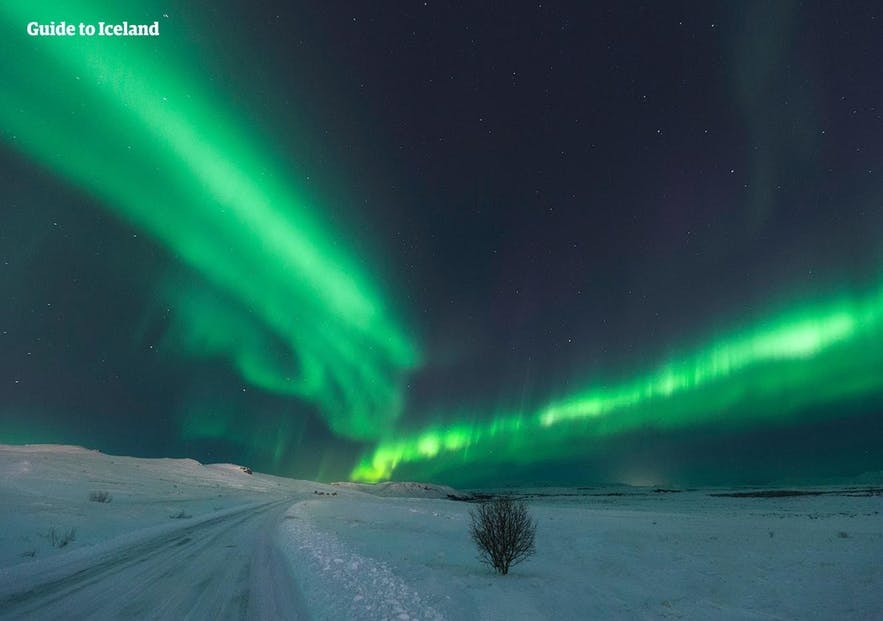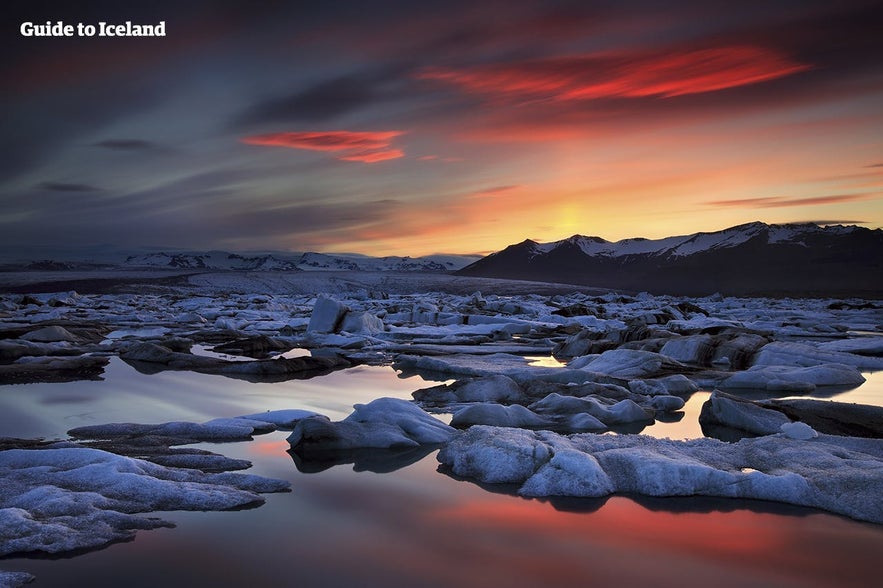Ring Road Travel Guide

Iceland has one main road: Route 1, or the Icelandic Ring Road. This ring road goes all around the island and is 1,332 kilometres long (828 miles), allowing visitors to see all regions bar the Westfjords and Snæfellsnes Peninsula.
Perhaps most importantly, the road connects the capital, Reykjavík, to the second biggest city in Iceland, Akureyri, in the north of the country. Take to the road yourself on a Ring Road tour in Iceland.
Other notable towns that are connected via the ring road are Borgarnes, Blönduós, Egilsstaðir, Höfn, Kirkjubæjarklaustur, Vík, Hella, Hvolsvöllur, Selfoss and Hveragerði.
Features on the Ring Road
A number of popular tourist attractions are also found by the ring road. In the south, drivers will pass the waterfalls Seljalandsfoss and Skógafoss; the glaciers Mýrdalsjökull and Eyjafjallajökull; the black-sand-beach of Reynisfjara, and the Jökulsárlón glacier lagoon.
In the east, there is the largest forest in Iceland, Hallormsstaðaskógur, and the lake Lagarfljót, said to contain a monster, records for which date back centuries before the Loch Ness Monster.
In the north, the most notable features are Lake Mývatn and Goðafoss waterfall. In the west are many historical settlements and beautiful fjords.
History of the Ring Road
The road was completed in 1974, with the opening of Iceland's longest bridge, which crosses Skeiðará river in southeast Iceland. In 1998 a tunnel below the fjord Hvalfjörður shortened the drive around Iceland by about one hour and it offers a straight and easy alternative to a winding fjord.
The Hvalfjörður tunnel is the largest tunnel in Iceland, 5.8 kilometres (3.6 miles) long and an impressive 165 metres (541 feet) below sea level. The ring road has two other tunnels; Almannaskarð in the southeast by Höfn, and the Vaðlaheiðar tunnel in north Iceland which shortens the drive from Akureyri to Húsavík by 16km.
In wintertime, The Icelandic Road and Coastal Administration tries to keep all of the Ring Road is kept open. However, parts of it can be closed in extreme weather.
Good to Know
The ring road consists mainly of paved two lanes road (one each direction). Some sections of the ring road are original 1940s country roads demanding caution when driving with features such as many sharp curves, blind curves, blind summits as well as single lane bridges.
The speed limit is 90km per hour on the paved section of the road (lower when it passes through towns), and 80km per hour on gravel.
The ring-road can be driven in a two-wheel-drive throughout the year, but it is highly recommended you rent a four-wheel-drive if travelling between October and May.
Guide to Iceland would advise people to drive cautiously on the ring road both in summer and wintertime, but also to explore other roads leading from it to multiple attractions. Be sure that if you want to stop to take a picture, make sure you have turned off into a safe parking area. Stopping on the Ring Road itself can be very dangerous for you and other travellers using it.
Attractions Nearby
Popular categories

Download Iceland’s biggest travel marketplace to your phone to manage your entire trip in one place
Scan this QR code with your phone camera and press the link that appears to add Iceland’s biggest travel marketplace into your pocket. Enter your phone number or email address to receive an SMS or email with the download link.



















